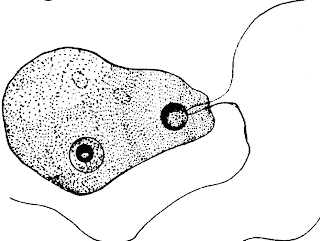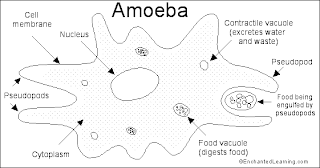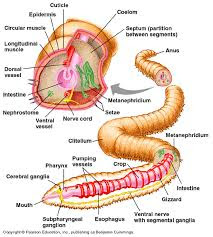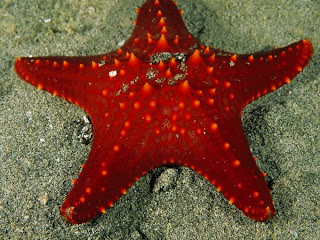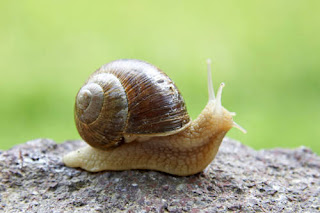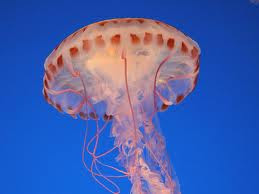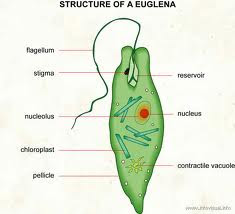cloud computing technology
call center technology
information technology degrees
technology credit union
information technology degree
information technology schools
virtualization technology
cloud technology
information technology education
information technology consulting
information technology colleges
cloud technology companies
information technology training
visible technologies
technology insurance
information technology courses
information technology security
technology degrees
virtual technology
information technology management
2. Mesothelioma
3. Acne
4. Life Insurance
5. Asbestos
6. Bextra
7. Bankruptcy
8. Car Insurance
9. Dental Plan
10. Private Jet
11. Debt Consolidatio
12. Credit Card
13. Canadian Pharmac
14. Online Tradin
15. Equity Line Credit
16. Loans
17. Mortgages
18. Pay Day Loans
19. Cash Advance
20. Equity Loans
21. Reduce Debt
22. Refinance
23. Jet Charter
24. Rehab
25. Wrongful death
26. Legal Advice
27. Taxes
28. Investing
29. Bonds
30. Vioxx
31. IRA Rollover
32. Refinance Quotes
33. Adult Education
34. Distance Learning
35. Alcohol Treatment
36. Depression
37. Drug Rehab
38. Extra Money
39. Cell Phone Plans
40. Calling Cards
41. VOIP
42. Weight Loss
43. Homeowner’s Insurance
44. Rewards Cards
45. Spam Filter
46. Lasik
47. Facelift
48. Teeth Whitening
49. Annuity
50. Anti Virus Protection
51. Adult Diaper
52. Free Credit Report
53. Credit Score
54. Satellite
55. Anti Spam Software
56. Dedicated Hosting
57. Domain Name
58. Need Money
59. Bachelor Degree
60. Master Degree
61. Doctorate Degree
62. Work at Home
63. Quick Book
64. Spyware
65. Eloan
66. Malpractice Lawyer
67. Lenox China
68. Cancer
69. Payperclick
70. Personal Injury Attorney
71. Lexington Law
72. Video Conferencing
73. Transfer Money
74. Windstar Cruise
75. Casinos Online
76. Laptop Computer
77. Online Banking
78. Borrow Money
79. Low Interest Credit Cards
80. Personal Domain Name
81. Cellular Phone Rental
82. Internet Broker
83. Term Life
84. Cheap Hosting
85. University Degrees Online
86. Online Marketing
87. Consolidate
88. Business Credit
89. Web Host
90. Web Designing
91. Death Insurance
92. Yellow Page Advertising
93. Travel Insurance
94. Register Domain
95. Credit Counseling
96. Email Hosting
97. Trans Union
98. Consumer Credit
99. Blue Cross
100. Helpdesk Software
MESOTHELIOMA LAW FIRM
DONATE CAR TO CHARITY CALIFORNIA
DONATE CAR FOR TAX CREDIT
DONATE CARS IN MA
DONATE YOUR CAR SACRAMENTO
HOW TO DONATE A CAR IN CALIFORNIA
SELL ANNUITY PAYMENT
DONATE YOUR CAR FOR KIDS
ASBESTOS LAWYERS
STRUCTURED ANNUITY SETTLEMENT
ANNUITY SETTLEMENTS
CAR INSURANCE QUOTES COLORADO
NUNAVUT CULTURE
DAYTON FREIGHT LINES
HARDDRIVE DATA RECOVERY SERVICES
DONATE A CAR IN MARYLAND
MOTOR REPLACEMENTS
CHEAP DOMAIN REGISTRATION HOSTING
DONATING A CAR IN MARYLAND
DONATE CARS ILLINOIS
CRIMINAL DEFENSE ATTORNEYS FLORIDA
BEST CRIMINAL LAWYER IN ARIZONA
LIFE INSURANCE CO LINCOLN
HOLLAND MICHIGAN COLLEGE
ONLINE MOTOR INSURANCE QUOTES
ONLINE COLLEDGES
PAPERPORT PROMOTIONAL CODE
ONLINECLASSES
WORLD TRADE CENTER FOOTAGE
MASSAGE SCHOOL DALLAS TEXAS
PSYCHIC FOR FREE
DONATE OLD CARS TO CHARITY
LOW CREDIT LINE CREDIT CARDS
DALLAS MESOTHELIOMA ATTORNEYS
CAR INSURANCE QUOTES MN
DONATE YOUR CAR FOR MONEY
CHEAP AUTO INSURANCE IN VA
MET AUTO
FORENSICS ONLINE COURSE
HOME PHONE INTERNET BUNDLE
DONATING USED CARS TO CHARITY
PHD IN COUNSELING EDUCATION
NEUSON
CAR INSURANCE QUOTES PA
ROYALTY FREE IMAGES STOCK
CAR INSURANCE IN SOUTH DAKOTA
EMAIL BULK SERVICE
WEBEX COSTS
CHEAP CAR INSURANCE FOR LADIES
CHEAP CAR INSURANCE IN VIRGINIA
REGISTER FREE DOMAINS
BETTER CONFERENCING CALL
FUTURISTIC ARCHITECTURE
MORTGAGE ADVISER
CAR DONATE
VIRTUAL DATA ROOMS
AUTOMOBILE ACCIDENT ATTORNEY
AUTO ACCIDENT ATTORNEY
CAR ACCIDENT LAWYERS
DATA RECOVERY RAID
MOTOR INSURANCE QUOTES
PERSONAL INJURY LAWYER
CAR INSURANCE QUOTES
ASBESTOS LUNG CANCER
INJURY LAWYERS
PERSONAL INJURY LAW FIRM
ONLINE CRIMINAL JUSTICE DEGREE
CAR INSURANCE COMPANIES
BUSINESS VOIP SOLUTIONS
call center technology
information technology degrees
technology credit union
information technology degree
information technology schools
virtualization technology
cloud technology
information technology education
information technology consulting
information technology colleges
cloud technology companies
information technology training
visible technologies
technology insurance
information technology courses
information technology security
technology degrees
virtual technology
information technology management
100 More High Paying Keywords For Google Adsense
1. Structured settlements2. Mesothelioma
3. Acne
4. Life Insurance
5. Asbestos
6. Bextra
7. Bankruptcy
8. Car Insurance
9. Dental Plan
10. Private Jet
11. Debt Consolidatio
12. Credit Card
13. Canadian Pharmac
14. Online Tradin
15. Equity Line Credit
16. Loans
17. Mortgages
18. Pay Day Loans
19. Cash Advance
20. Equity Loans
21. Reduce Debt
22. Refinance
23. Jet Charter
24. Rehab
25. Wrongful death
26. Legal Advice
27. Taxes
28. Investing
29. Bonds
30. Vioxx
31. IRA Rollover
32. Refinance Quotes
33. Adult Education
34. Distance Learning
35. Alcohol Treatment
36. Depression
37. Drug Rehab
38. Extra Money
39. Cell Phone Plans
40. Calling Cards
41. VOIP
42. Weight Loss
43. Homeowner’s Insurance
44. Rewards Cards
45. Spam Filter
46. Lasik
47. Facelift
48. Teeth Whitening
49. Annuity
50. Anti Virus Protection
51. Adult Diaper
52. Free Credit Report
53. Credit Score
54. Satellite
55. Anti Spam Software
56. Dedicated Hosting
57. Domain Name
58. Need Money
59. Bachelor Degree
60. Master Degree
61. Doctorate Degree
62. Work at Home
63. Quick Book
64. Spyware
65. Eloan
66. Malpractice Lawyer
67. Lenox China
68. Cancer
69. Payperclick
70. Personal Injury Attorney
71. Lexington Law
72. Video Conferencing
73. Transfer Money
74. Windstar Cruise
75. Casinos Online
76. Laptop Computer
77. Online Banking
78. Borrow Money
79. Low Interest Credit Cards
80. Personal Domain Name
81. Cellular Phone Rental
82. Internet Broker
83. Term Life
84. Cheap Hosting
85. University Degrees Online
86. Online Marketing
87. Consolidate
88. Business Credit
89. Web Host
90. Web Designing
91. Death Insurance
92. Yellow Page Advertising
93. Travel Insurance
94. Register Domain
95. Credit Counseling
96. Email Hosting
97. Trans Union
98. Consumer Credit
99. Blue Cross
100. Helpdesk Software
MESOTHELIOMA LAW FIRM
DONATE CAR TO CHARITY CALIFORNIA
DONATE CAR FOR TAX CREDIT
DONATE CARS IN MA
DONATE YOUR CAR SACRAMENTO
HOW TO DONATE A CAR IN CALIFORNIA
SELL ANNUITY PAYMENT
DONATE YOUR CAR FOR KIDS
ASBESTOS LAWYERS
STRUCTURED ANNUITY SETTLEMENT
ANNUITY SETTLEMENTS
CAR INSURANCE QUOTES COLORADO
NUNAVUT CULTURE
DAYTON FREIGHT LINES
HARDDRIVE DATA RECOVERY SERVICES
DONATE A CAR IN MARYLAND
MOTOR REPLACEMENTS
CHEAP DOMAIN REGISTRATION HOSTING
DONATING A CAR IN MARYLAND
DONATE CARS ILLINOIS
CRIMINAL DEFENSE ATTORNEYS FLORIDA
BEST CRIMINAL LAWYER IN ARIZONA
LIFE INSURANCE CO LINCOLN
HOLLAND MICHIGAN COLLEGE
ONLINE MOTOR INSURANCE QUOTES
ONLINE COLLEDGES
PAPERPORT PROMOTIONAL CODE
ONLINECLASSES
WORLD TRADE CENTER FOOTAGE
MASSAGE SCHOOL DALLAS TEXAS
PSYCHIC FOR FREE
DONATE OLD CARS TO CHARITY
LOW CREDIT LINE CREDIT CARDS
DALLAS MESOTHELIOMA ATTORNEYS
CAR INSURANCE QUOTES MN
DONATE YOUR CAR FOR MONEY
CHEAP AUTO INSURANCE IN VA
MET AUTO
FORENSICS ONLINE COURSE
HOME PHONE INTERNET BUNDLE
DONATING USED CARS TO CHARITY
PHD IN COUNSELING EDUCATION
NEUSON
CAR INSURANCE QUOTES PA
ROYALTY FREE IMAGES STOCK
CAR INSURANCE IN SOUTH DAKOTA
EMAIL BULK SERVICE
WEBEX COSTS
CHEAP CAR INSURANCE FOR LADIES
CHEAP CAR INSURANCE IN VIRGINIA
REGISTER FREE DOMAINS
BETTER CONFERENCING CALL
FUTURISTIC ARCHITECTURE
MORTGAGE ADVISER
CAR DONATE
VIRTUAL DATA ROOMS
AUTOMOBILE ACCIDENT ATTORNEY
AUTO ACCIDENT ATTORNEY
CAR ACCIDENT LAWYERS
DATA RECOVERY RAID
MOTOR INSURANCE QUOTES
PERSONAL INJURY LAWYER
CAR INSURANCE QUOTES
ASBESTOS LUNG CANCER
INJURY LAWYERS
PERSONAL INJURY LAW FIRM
ONLINE CRIMINAL JUSTICE DEGREE
CAR INSURANCE COMPANIES
BUSINESS VOIP SOLUTIONS
MESOTHELIOMA LAW FIRM
DONATE CAR TO CHARITY CALIFORNIA
DONATE CAR FOR TAX CREDIT
DONATE CARS IN MA
DONATE YOUR CAR SACRAMENTO
HOW TO DONATE A CAR IN CALIFORNIA
SELL ANNUITY PAYMENT
DONATE YOUR CAR FOR KIDS
ASBESTOS LAWYERS
STRUCTURED ANNUITY SETTLEMENT
ANNUITY SETTLEMENTS
CAR INSURANCE QUOTES COLORADO
NUNAVUT CULTURE
DAYTON FREIGHT LINES
HARDDRIVE DATA RECOVERY SERVICES
DONATE A CAR IN MARYLAND
MOTOR REPLACEMENTS
CHEAP DOMAIN REGISTRATION HOSTING
DONATING A CAR IN MARYLAND
DONATE CARS ILLINOIS
CRIMINAL DEFENSE ATTORNEYS FLORIDA
BEST CRIMINAL LAWYER IN ARIZONA
LIFE INSURANCE CO LINCOLN
HOLLAND MICHIGAN COLLEGE
ONLINE MOTOR INSURANCE QUOTES
ONLINE COLLEDGES
PAPERPORT PROMOTIONAL CODE
ONLINECLASSES
WORLD TRADE CENTER FOOTAGE
MASSAGE SCHOOL DALLAS TEXAS
PSYCHIC FOR FREE
DONATE OLD CARS TO CHARITY
LOW CREDIT LINE CREDIT CARDS
DALLAS MESOTHELIOMA ATTORNEYS
CAR INSURANCE QUOTES MN
DONATE YOUR CAR FOR MONEY
CHEAP AUTO INSURANCE IN VA
MET AUTO
FORENSICS ONLINE COURSE
HOME PHONE INTERNET BUNDLE
DONATING USED CARS TO CHARITY
PHD IN COUNSELING EDUCATION
NEUSON
CAR INSURANCE QUOTES PA
ROYALTY FREE IMAGES STOCK
CAR INSURANCE IN SOUTH DAKOTA
EMAIL BULK SERVICE
WEBEX COSTS
CHEAP CAR INSURANCE FOR LADIES
CHEAP CAR INSURANCE IN VIRGINIA
REGISTER FREE DOMAINS
BETTER CONFERENCING CALLS
FUTURISTIC ARCHITECTURE
MORTGAGE ADVISER
CAR DONATE
VIRTUAL DATA ROOMS
AUTOMOBILE ACCIDENT ATTORNEY
AUTO ACCIDENT ATTORNEY
CAR ACCIDENT LAWYERS
DATA RECOVERY RAID
MOTOR INSURANCE QUOTES
PERSONAL INJURY LAWYER
CAR INSURANCE QUOTES
ASBESTOS LUNG CANCER
INJURY LAWYERS
PERSONAL INJURY LAW FIRM
ONLINE CRIMINAL JUSTICE DEGREE
CAR INSURANCE COMPANIES
BUSINESS VOIP SOLUTIONS


